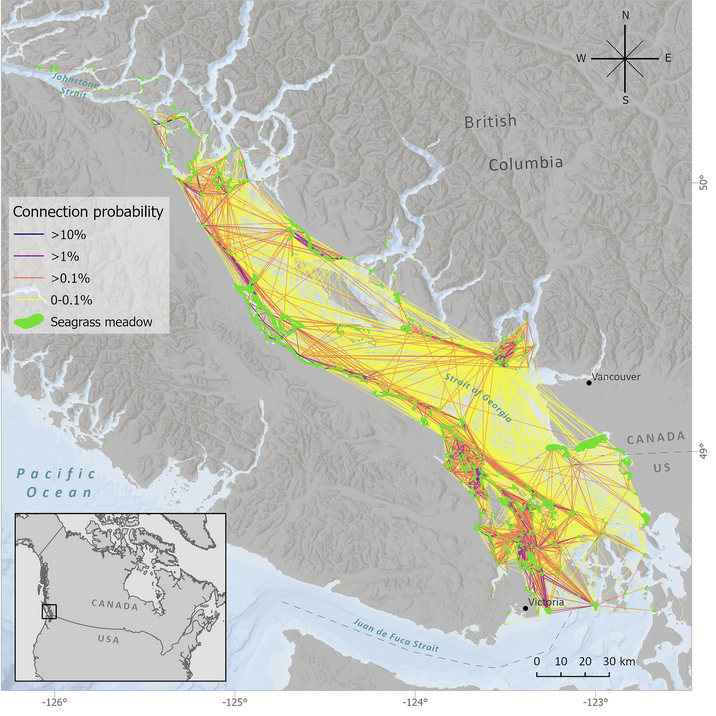
Fig. 2. Seagrass meadows and 21-day dispersal connection probabilities in the Salish Sea. Connections are a visual representation of the connectivity matrix (c) used in the impacts and metapopulation analysis. Potential connectivity among seagrass meadows was measured in Cristiani et al. (2021) using a biophysical model of oceanographic currents and dispersal traits. In this study, we focus on the connectivity of seagrass associated species that are represented by a 21-day planktonic larval duration. Map credits: (World Hillshade: Esri 2015, Ocean Basemap: Esri 2018; seagrass: Cristiani et al. 2021).
Abstract
Coastal ecosystems face numerous stressors from anthropogenic activities. Furthermore, local stressors that directly impact ecological processes in one location can scale up to have indirect regional consequences. In the case of dispersing marine invertebrates, human activity may impact dispersal and survival rates, which can then alter connectivity patterns and metapopulation dynamics across the seascape. Here, we developed a framework to model metapopulation persistence of seagrass-associated invertebrates in the Salish Sea, focusing primarily on British Columbia, Canada. We combined a biophysical model of dispersal with metrics of habitat naturalness to model how local human activities that may impact dispersal can alter habitat connectivity patterns and potentially impact regional metapopulation persistence. We found that human activities that potentially impact dispersal can reduce population persistence across a region, although the effect varied based on location, population dynamics, and severity of the impacts modeled. The majority of populations, however, remained persistent, suggesting that there are robust and redundant pathways of dispersal that can maintain population connectivity in the face of local disturbances. This study highlights the importance of understanding human impacts and connectivity together in a regional context which could have implications for future marine spatial planning and the effective management of biodiversity.